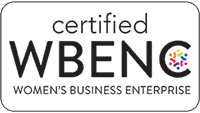Rome wasn't built in a day. Everyone knows it takes time to develop and create great things, and employee wellness programs are no different.
If you want any endeavor or project to be successful, you must first measure it. How will you know if you're headed in the right direction if you're not continually checking in and evaluating your progress?
It's often difficult to see improvement. Many people expect to see change quickly, but, as everyone knows — it doesn't happen overnight. Regularly measuring data and recording it to review later can help you see your progress, and it will help you reach your goals if you keep going. Without measurements, you might not realize you’re truly getting somewhere. And that's why Ongoing Evaluation is so important for developing a strong employee wellness plan.
Our 10 best practices are effective tools we implement with our wellness solutions to ensure that companies have a successful employee wellness plan. We explored our seventh best practice, Ongoing Evaluation, to help demonstrate how you can properly build an intentional, long-lasting employee wellness program.
What is Ongoing Evaluation?
Ongoing Evaluation is when your regular metrics include both your well-being program and any supporting activities/programs you offer your employees. This best practice plays a major role in keeping your employees inspired and motivated — they want to see how they're making progress and how it affects their goals.
Frequently measuring the progress and success of your employee wellness plan will help you see whether or not it's moving forward, is at a standstill, or has fallen behind. This data is useful in helping you make or adjust a plan of action for getting on track.
How to Integrate Ongoing Evaluation Into Your Wellness Plan
Here's how you can successfully evaluate your own employee wellness program. Following our best practices, your Ongoing Evaluation policies were developed properly if...
—Quarterly metrics are reported for participation and incentive status.
—Annual metrics are reported for aggregate biometric report (if biometrics are collected), aggregate health risks and lifestyle report from health risk assessment, and year-end incentive report.
—Metrics are reported for program satisfaction survey results and employee interest and culture survey results.
—Annual review of healthcare utilization is done to help determine targeted wellness strategies.
—You periodically review estimated modifiable healthcare expenditures and absenteeism, and estimate presenteeism to understand the risks of the population.
—Results of evaluations are communicated to employees to bring awareness to the importance of employee wellness programs.
Next month, we'll break down our final two best practices in more detail — be sure to follow along and don't miss out on how you can invest in these wellness solutions to help your employees thrive!
Interested in learning more about implementing an employee wellness program at your company? Let us help guide you. At OnSite Wellness, employee health and wellness is our specialty.
We offer additional supporting services on top of our Best Practices. Incorporating an employee wellness program at your workplace can have massive benefits for your employees in tracking and managing a healthy lifestyle.
Let us help you reach your goals and set your employees up for success! Contact us today to get started.
-1.png?width=300&name=1127895_OSW%20Tagline%20Logo_081021%20(1)-1.png)


